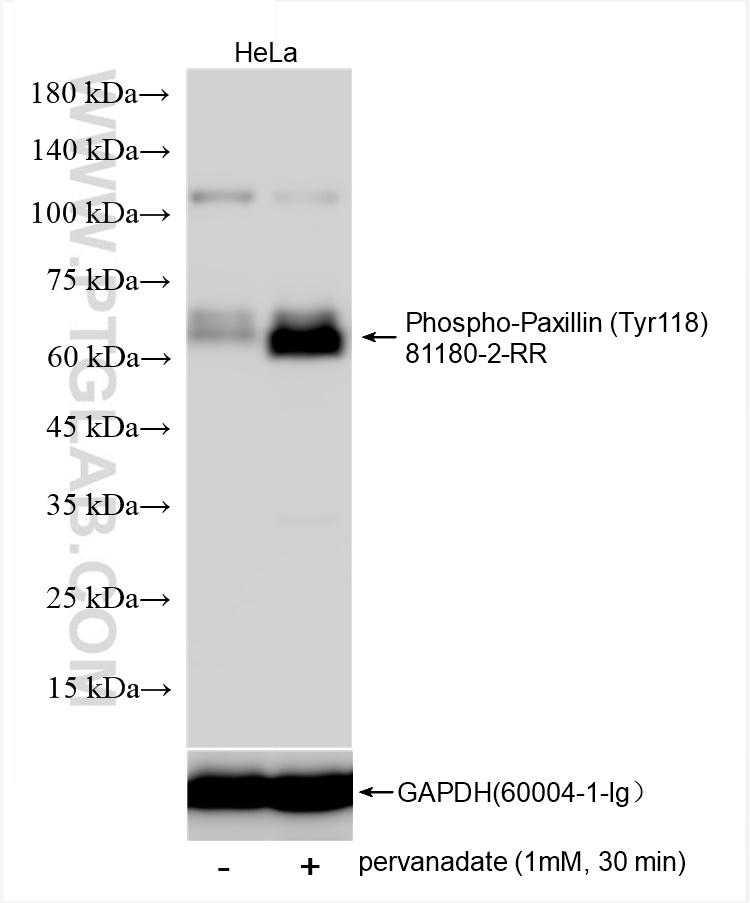验证数据展示
经过测试的应用
| Positive WB detected in | pervanadate treated HeLa cells |
推荐稀释比
| 应用 | 推荐稀释比 |
|---|---|
| Western Blot (WB) | WB : 1:2000-1:10000 |
| It is recommended that this reagent should be titrated in each testing system to obtain optimal results. | |
| Sample-dependent, Check data in validation data gallery. | |
产品信息
81180-2-RR targets Phospho-Paxillin (Tyr118) in WB, ELISA applications and shows reactivity with human samples.
| 经测试应用 | WB, ELISA Application Description |
| 经测试反应性 | human |
| 免疫原 | Peptide 种属同源性预测 |
| 宿主/亚型 | Rabbit / IgG |
| 抗体类别 | Recombinant |
| 产品类型 | Antibody |
| 全称 | paxillin |
| 别名 | |
| 计算分子量 | 591 aa, 65 kDa |
| 观测分子量 | 68 kDa |
| GenBank蛋白编号 | BC136787 |
| 基因名称 | Paxillin |
| Gene ID (NCBI) | 5829 |
| RRID | AB_3670493 |
| 偶联类型 | Unconjugated |
| 形式 | Liquid |
| 纯化方式 | Protein A purfication |
| UNIPROT ID | P49023 |
| 储存缓冲液 | PBS with 0.02% sodium azide and 50% glycerol , pH 7.3 |
| 储存条件 | Store at -20°C. Stable for one year after shipment. Aliquoting is unnecessary for -20oC storage. |
背景介绍
Paxillin (p68-kD) is one of the integrin assembly proteins and can interact directly with several integrin assembly proteins, including vinculin, talin, β1 integrin, focal adhesion kinase (FAK), c-Src and Csk. Integrin-mediated tyrosine phosphorylation also enables paxillin to interact with various signaling molecules: tyrosine residues (Y) 31 and 118 being especially predominant targets of phosphorylation by kinases and creating binding sites for the SH2 domain of adaptor protein Crk. Thus, paxillin plays apivotal role in cell adhesion, migration and further oncogenic transformation. (PMID: 11774284)
实验方案
| Product Specific Protocols | |
|---|---|
| WB protocol for Phospho-Paxillin (Tyr118) antibody 81180-2-RR | Download protocol |
| Standard Protocols | |
|---|---|
| Click here to view our Standard Protocols |
